15.04.2015
Excavation at Naga: the Spring-Campaign 2015
Excavation at Naga: the Spring-Campaign 2015
The excavation of Temple 1200, begun in late 2014, was taken up again in the middle of January. First tests of the new documentation system happily proceeded very smoothly. The camera drone and the software for the rendering of 3-D models were both put through their paces and their results continually compared with those of ‘conventional’ documentation and measurement techniques. The conclusions are impressive and have allowed the work to proceed rapidly.
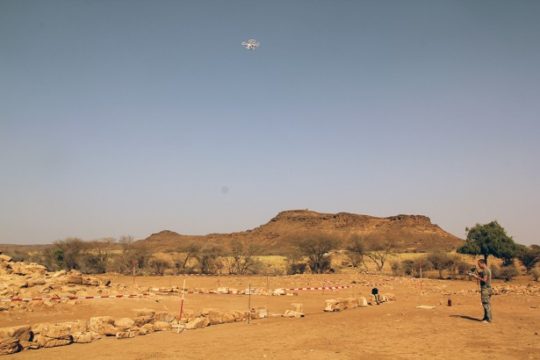 © Naga-Projekt
© Naga-ProjektOver the course of the two-month campaign, large areas of the temple – evidently built on a pedestal – were laid bare; many of the blocks extracted still bore parts of the original wall reliefs. One block, broken into several pieces, depicts a large lion’s head, possibly a clue that the sanctuary was once dedicated to the lion god Apedemak.
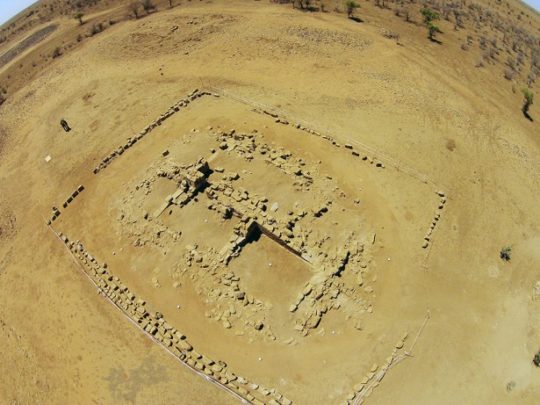 © Naga-Projekt
© Naga-ProjektUnfortunately, many of the blocks are very poorly preserved, making a first on-site consolidation and stabilizing of the blocks necessary. The excavations in the outer area of the temple also held some surprises – a lot more fallen blocks were found than anticipated. What is more, walls were uncovered belonging to a probable second phase of construction and an extension attached to the temple’s pedestal.
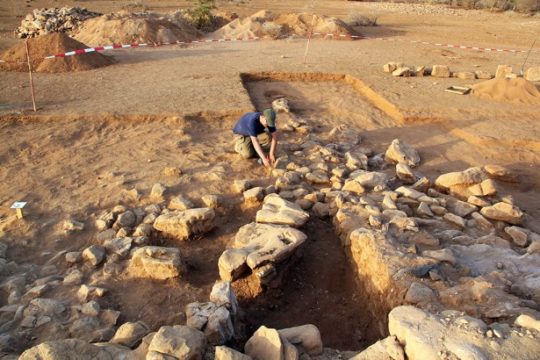 © Naga-Projekt
© Naga-ProjektParallel to excavation work, planning for the Lion Temple’s future protective roofing continued, as did restoration work on the Temple of Amun, where the main focus remains the protection of the antique walls – built for the most part out of unfired mudbrick – from wind and weather
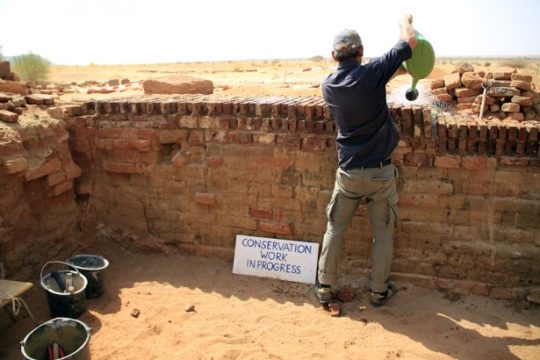 © Naga-Projekt
© Naga-ProjektParallel to our other work, it was possible to complete the documentation of the entire Naga necropolis using the new photo drone.
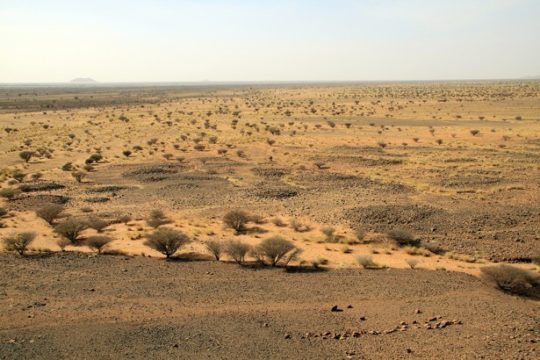 © Naga-Projekt
© Naga-ProjektWork in Naga was suspended in the middle of March. As ever, special thanks is due to our Sudanese workers, without whom the on-site excavation would not be possible.
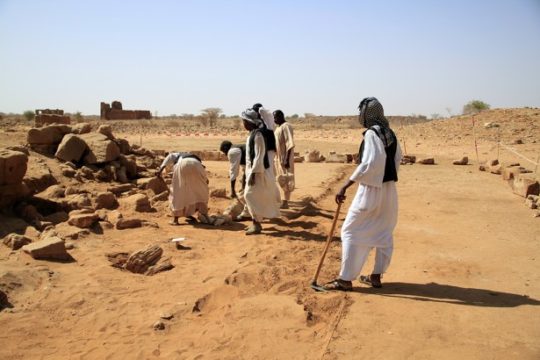 © Naga-Projekt
© Naga-ProjektWe are currently working on publishing the results of our previous excavations. And, of course, the preparations for the next excavation season in the Fall of 2015 have already begun…
Many thanks as well to the Qatar-Sudan Archaeological Project and its representatives for making it possible to continue our work in Naga.

